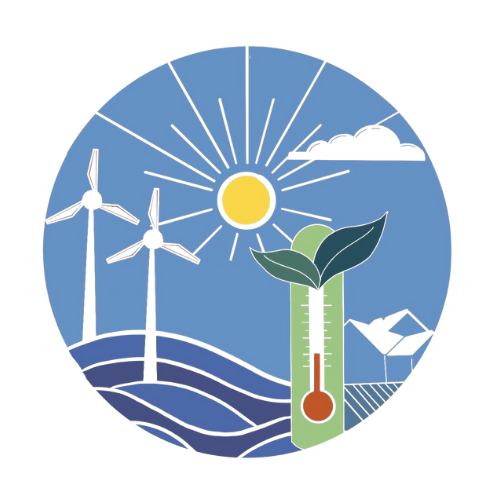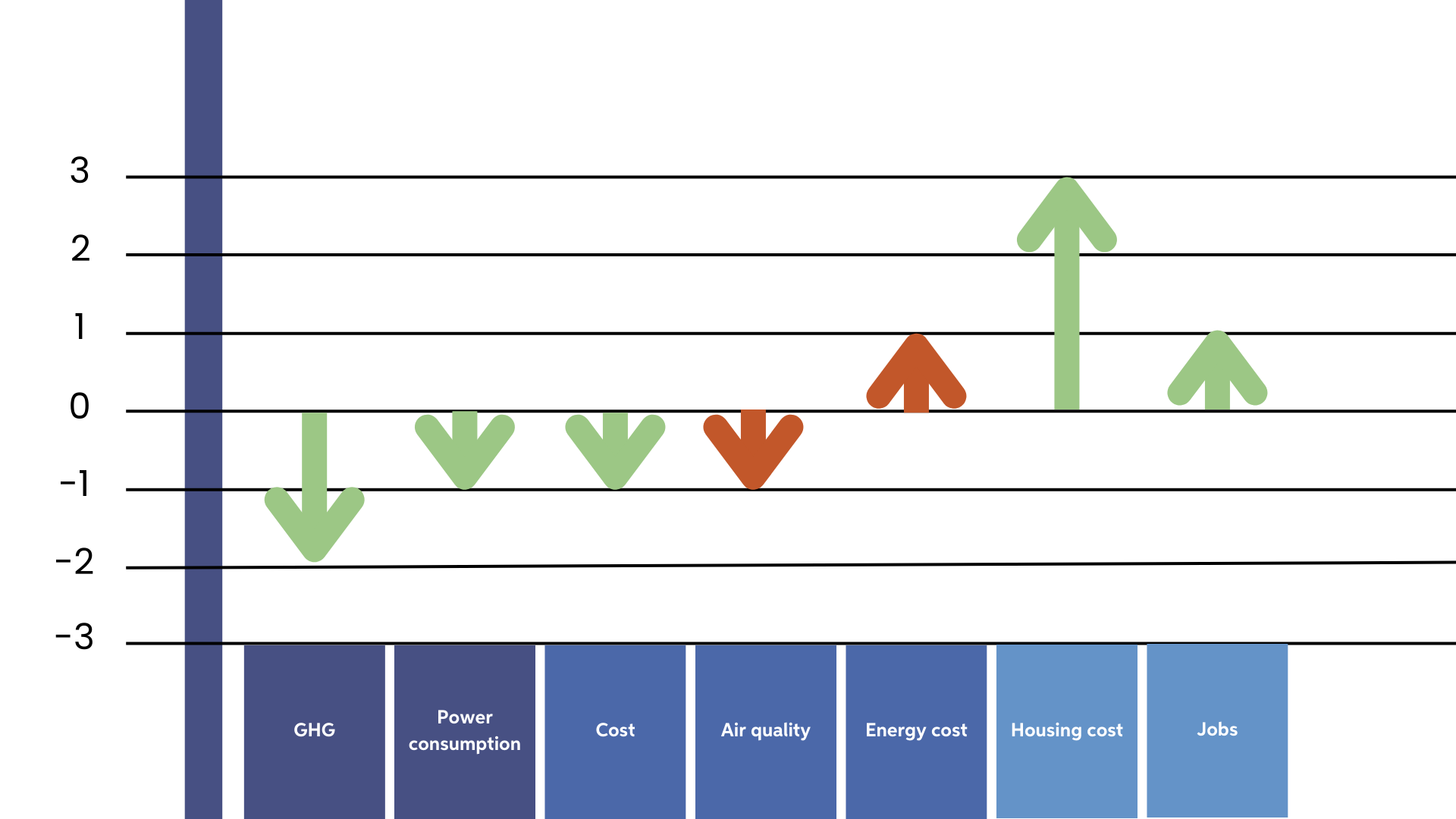
The Watershed Moment
To analyze how each scenario affected outcomes important to Impact 2045, we created a list of indicators to use to “score” our scenarios. These include greenhouse gas emissions, energy consumption, cost of implementation to municipalities, and indicators related to the key LIDAC burdens we identified as significant in New Haven County. Linguistic isolation and unemployment were represented as workforce development needs. The need to address asthma was captured in the category of air quality, and energy costs and housing costs were considered as their own standalone indicators.
On a scale of -3 to +3, each scenario was ranked across these indicators to capture the outcomes present under different conditions. The arrows in show whether an indicator increases or decreases in a scenario, and the color indicates whether the change is beneficial (green) or harmful (red). This analysis helped us understand the needs and challenges in each scenario in relation to our strategies.
While carbon free technologies continue to be adopted, current trends fueling climate change do not shift through the year 2045.
As a result the world is on track for medium to high greenhouse gas concentration outlined by the IPCC (Hausfather, 2019). Therefore, warming is predicted to possibly exceed 3.8 degrees celsius by 2100 (Hausfather, 2018), making IPCC goals of 1.5 degrees celsius and 2.0 celsius unattainable. As a result, significant climate change impacts are being felt throughout New Haven County. Areas along the coast are already inundated with over 1 foot of additional sea level rise (NOAA, 2022), while inland areas along the Quinnipiac, Naugatuck, and West Rivers also suffer effects due to sea level rise (2022). Inundation compounds the increased frequency of tropical cyclone impacts, which continue to threaten the county at an ever increasing rate (Hicke et al., 2022). Each passing year, it seems that storm frequency and intensity is increasing, heavily impacting areas up and down the eastern seaboard, gulf, and pacific coasts.
Alongside sea level and tropical cyclone effects, the region also begins to experience rapid shifts in temperature and precipitation patterns. The average temperature of the region increases, as does the likelihood of extreme heat events (2022). As a result, urban heat island effect and heat related health impacts in the region increase, especially in areas with low levels of tree canopy and aging buildings with little insulation and cooling technologies. Moreover, precipitation increases along with the risk of extreme weather events. This heavily impacts human developments along waterways, as aging culvert systems are unable to handle the frequency and intensity of rain events (Spiegel, 2023). Areas covered in impervious surfaces also suffer, and New Haven faces the dual reality of flooding from the sea and upland sources. Effects range from loss in property damage and economic operations to loss of life. In this scenario, continuing patterns of human development in the region shift, as coastal retreat northward to higher ground becomes the norm and urban heat island effects become critical across many at-risk areas. Moreover, more and more summers bring a hazy orange reminder of the effects climate change is having across the continent, as wildfires in Canada and along the west coast of the United States carry smoke into the northeast region (Tandon, 2023). Resulting air quality decreases are observed, while the cumulative impacts of this new normal begin to affect the opinions of the residents of New Haven County.
New Haven County is not only changing because of climate change. Its people are changing as well. Millennials and Gen Z age and carry forth their already progressive beliefs on the importance of tackling climate change (Tyson et al., 2023), while younger generations become increasingly concerned about the lack of national efforts to reduce greenhouse gas emissions. Moreover, people across generations are spurred into action due to the considerable impacts of climate change already being felt in the region and across the globe. Resulting from this is a more regional approach to climate change planning, while alternative solutions that once had little political and social support become more common. These include changes in consumption patterns, increased buildout of on-site renewables and energy co-ops, as well as general shifts in attitude towards current governing structures. Moreover, younger generations continue to shift towards less carbon-intensive forms of transportation, such as public transit and biking (Krueger et al, 2019), while modes of land use that prioritize density replace traditional single family, large lot development as the dominant growth pattern in the region. The rural, suburban and rural divide lessens as connectivity between communities increases. This is supported by coastal retreat as well as increased migration into the region (Hauer et al., 2016; Fleming et al., 2019). While this changes the typology of the region, housing supply struggles to keep pace with population and coastal retreat, leading to increased prices and lower levels of homeownership.



